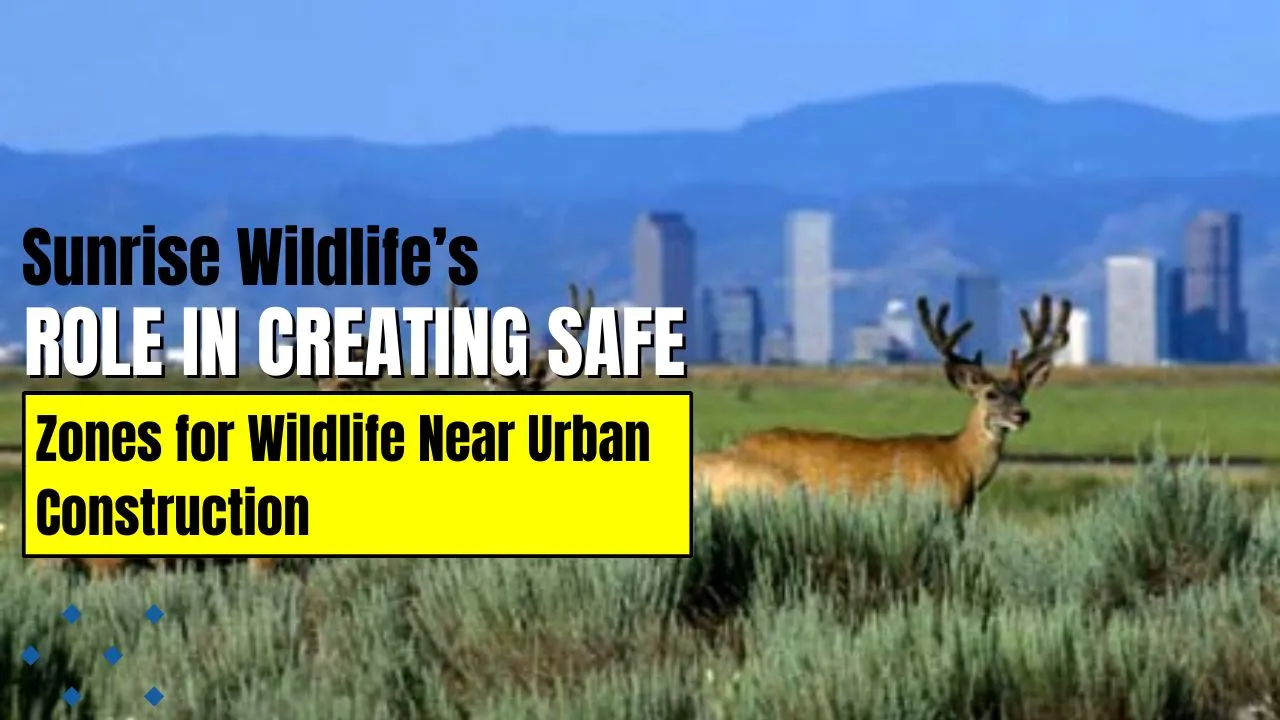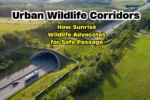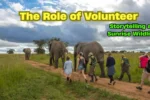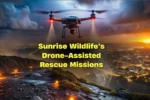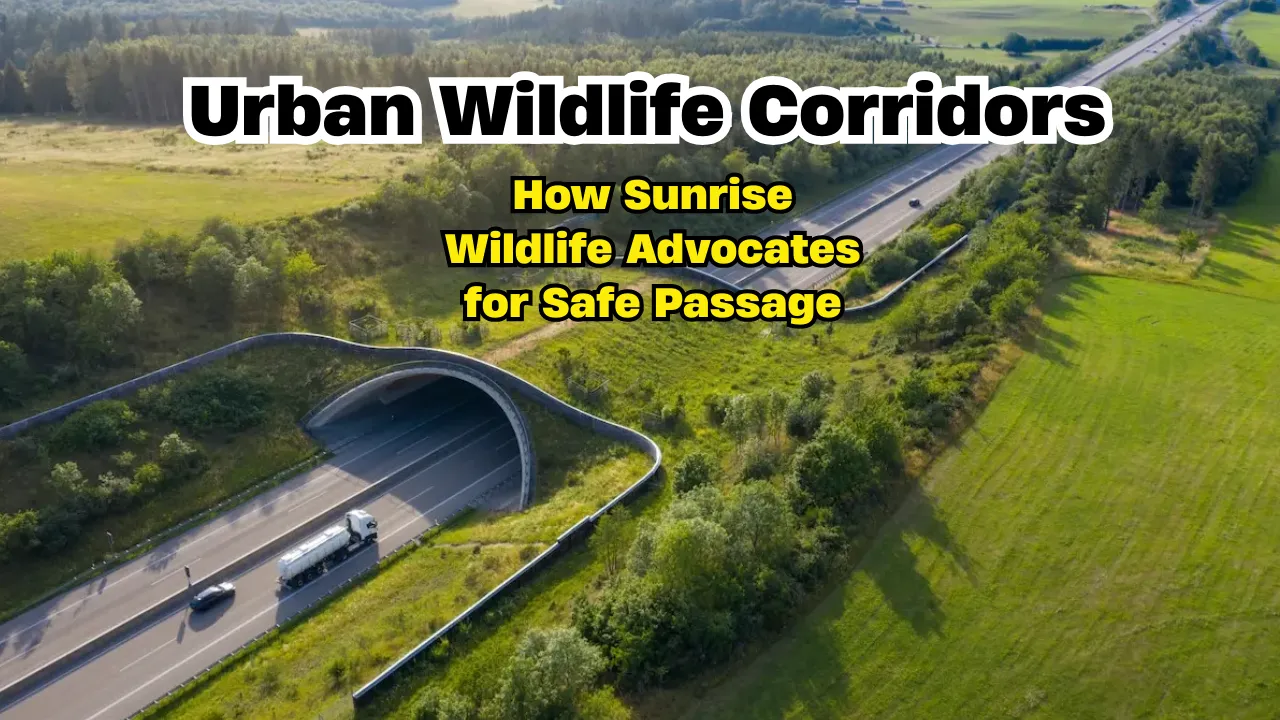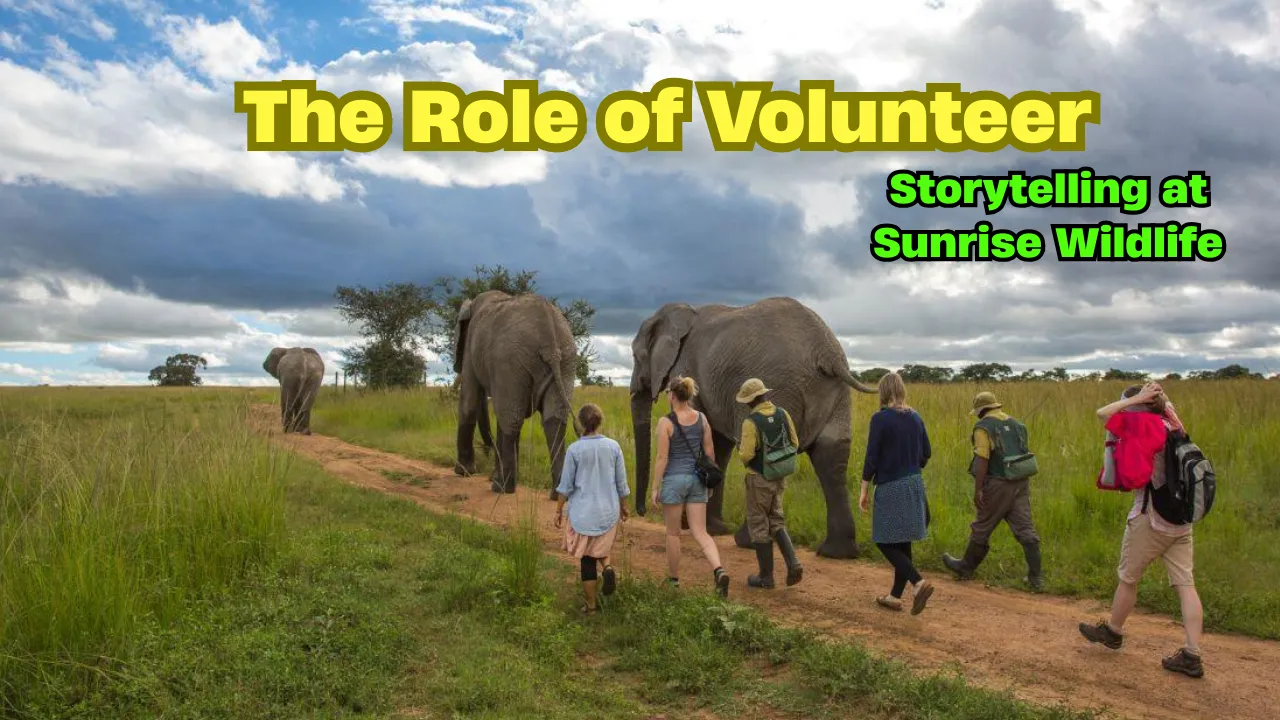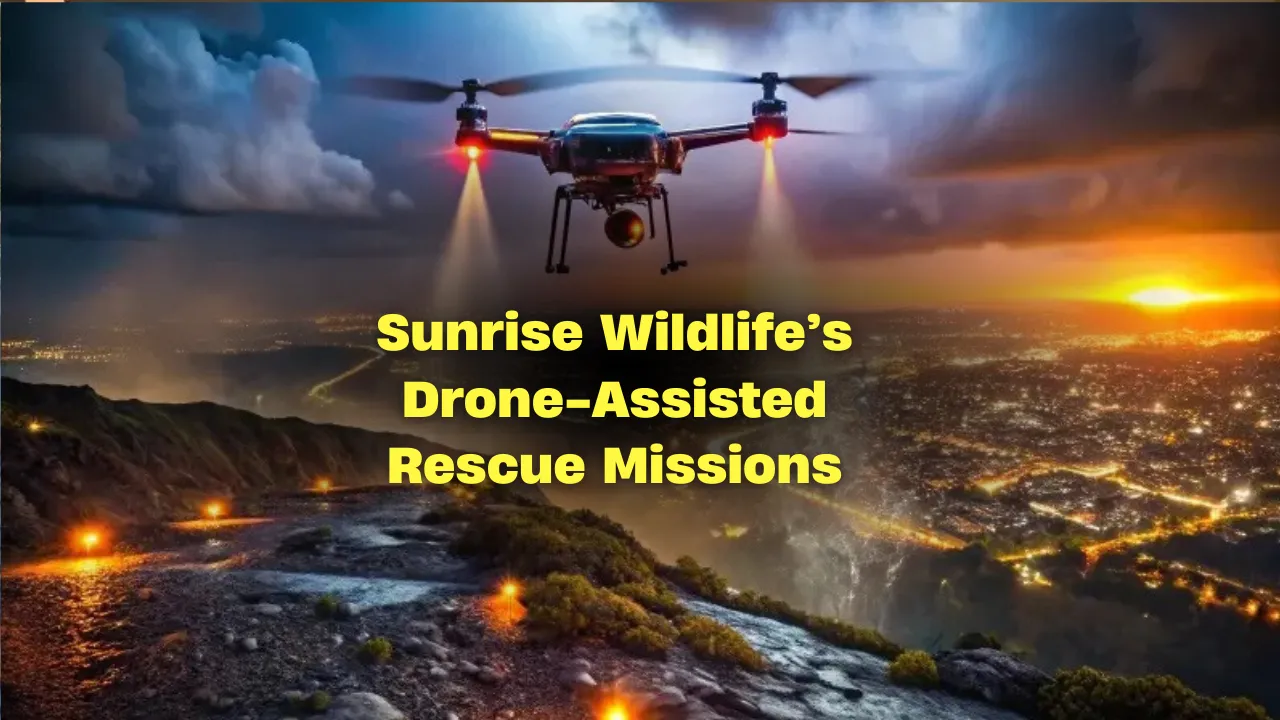Sunrise Wildlife and Its Role in Urban Conservation: Sunrise Wildlife has emerged as a crucial force in protecting animal habitats threatened by rapid city development. As urban areas expand, natural ecosystems are increasingly under pressure, forcing animals to navigate unfamiliar terrain, face reduced food sources, and suffer from habitat loss. Construction sites pose additional hazards, including noise pollution, displacement, and roadway dangers, making survival difficult for many species.
This article explores how Sunrise Wildlife plays a proactive role in mitigating the effects of urban construction on wildlife. It focuses on their efforts in creating and preserving safe zones where animals can live and move safely within or around expanding cities. Through habitat assessments, wildlife-friendly planning, community education, and innovative relocation techniques, they help build a better balance between nature and city life.
Sunrise Wildlife and Its Role in Urban Conservation
Sunrise Wildlife is dedicated to the delicate balance between city growth and urban wildlife preservation. Their mission is centered on minimizing the negative construction impact on wildlife by creating wildlife-friendly urban planning strategies. These include mapping habitats, working with developers, and ensuring animals are not only protected but can continue to thrive. Their approach prioritizes sustainable development, focusing on coexistence rather than conflict. By forming key partnerships with municipalities and local communities, they design and implement practical solutions such as wildlife corridors, safe zones, and relocation programs. This model sets a vital example for how cities can grow responsibly without sacrificing their surrounding natural ecosystems.
Overview Table: Key Activities of Sunrise Wildlife
| Activity | Purpose | Benefit to Wildlife |
| Habitat Assessment | Identify animal habitats before construction | Protects vulnerable species early on |
| Wildlife Corridors | Create travel paths for animals | Reduces road mortality, maintains ecosystem connectivity |
| Safe Zones | Preserve or restore green spaces near cities | Offers secure living environments for urban wildlife |
| Relocation Programs | Move animals away from construction sites | Prevents injury or death during development |
| Community Education | Teach residents and builders about local wildlife | Promotes long-term conservation awareness |
Importance of Safe Zones Near Cities
Safe zones are more than just patches of greenery—they are carefully planned havens that allow animals to maintain their natural behaviors within urban landscapes. As cities sprawl outward, animals such as foxes, raccoons, birds, and even deer are pushed closer to human populations. Without designated safe zones, these creatures struggle to find shelter and food, often leading to human-wildlife conflicts or fatalities.
Sunrise Wildlife plays a vital role in identifying and protecting these zones. They analyze environmental data and work with urban planners to conserve existing green spaces or convert unused land into wildlife-supporting areas. These spaces are enriched with native vegetation, water sources, and minimal human disturbance to mimic natural habitats as closely as possible.
How Sunrise Wildlife Identifies High-Risk Zones
Before any large-scale construction begins, Sunrise Wildlife conducts detailed habitat preservation surveys. These assessments involve identifying animal tracks, burrows, nesting areas, and the presence of native plant species. Using GPS mapping and wildlife monitoring tools, they flag areas at high risk of disturbance.
Once a high-risk zone is found, Sunrise Wildlife collaborates with developers to alter building plans or set boundaries around sensitive areas. This early intervention reduces stress on animal populations and prevents irreversible damage to biodiversity. In situations where avoidance isn’t possible, they initiate wildlife relocation operations, transporting species to safer zones with suitable environmental conditions.
Planning Wildlife Corridors
A key strategy in urban conservation is the development of wildlife corridors, which connect fragmented habitats, allowing animals to travel between safe areas without encountering roads or construction. These corridors often take the form of overpasses, underpasses, green rooftops, or planted pathways between city parks.
Sunrise Wildlife works hand-in-hand with engineers and city planners to incorporate such corridors into infrastructure projects. For example, when highways intersect migration routes, they help build bridges designed specifically for animals, complete with natural foliage and barriers to guide them. These connections are crucial for genetic diversity, mating, feeding, and seasonal migrations.
Community Education and Involvement
No conservation effort is complete without public support. Sunrise Wildlife recognizes the importance of involving local residents, schools, and construction teams in their mission. They host workshops, school presentations, and neighborhood events that teach the basics of wildlife protection and the role every citizen plays.
Builders are trained to recognize signs of wildlife activity and how to handle encounters responsibly. Homeowners are guided on how to maintain urban wildlife habitats in their gardens or backyards. These educational efforts not only increase awareness but help foster a culture of coexistence where people become stewards of their local environment.
Sunrise Wildlife’s Key Contributions:
- Urban Habitat Mapping:
Using technology and ecological knowledge, Sunrise Wildlife maps out animal hotspots and migratory routes. These maps are shared with city developers to avoid harmful projects in ecologically sensitive areas. - Wildlife Rescue and Relocation:
In emergency cases, such as tree removal or land clearance, Sunrise Wildlife mobilizes trained staff to safely capture and relocate animals. These rescues often happen within tight timelines, requiring efficiency and care to minimize stress to the creatures involved.
Challenges Faced by Sunrise Wildlife
Despite their successes, Sunrise Wildlife faces several challenges. The rapid pace of urban growth often leaves little time for thorough environmental assessments. Developers under pressure to meet deadlines may resist conservation recommendations. There’s also the issue of funding—creating wildlife corridors and maintaining safe zones require significant resources, both financial and logistical.
Additionally, enforcing protection laws for urban wildlife can be difficult. Not all municipalities have strong wildlife policies in place, and public indifference or misunderstanding can slow down progress. Even so, Sunrise Wildlife continues to advocate and innovate, often partnering with environmental nonprofits, universities, and city governments to fill these gaps.
Impact of Safe Zones on Urban Wildlife
The long-term effect of safe zones created by Sunrise Wildlife is promising. In many areas, local wildlife populations are stabilizing. Species once pushed out are returning. Birds, small mammals, and even pollinators like bees and butterflies are finding refuge in restored green spaces.
These safe areas not only benefit animals—they improve human lives too. More green space means cleaner air, better stormwater absorption, and cooler city temperatures. They also offer opportunities for nature-based recreation and education, helping urban dwellers reconnect with the environment.
Future Plans of Sunrise Wildlife
Looking ahead, Sunrise Wildlife aims to integrate digital tools for wildlife tracking and urban planning. This includes real-time data on animal movement and advanced GIS mapping. They are expanding their work to smaller towns experiencing rapid development, ensuring that wildlife conservation isn’t limited to major urban centers.
Their upcoming initiatives also include building a public database for reporting animal sightings, injuries, or safe zone conditions. Through these efforts, they aim to make urban conservation more accessible, transparent, and community-driven.
FAQs
How does Sunrise Wildlife choose where to create safe zones?
They perform environmental surveys to identify wildlife-rich areas and evaluate the level of construction threat.
Can animals be safely moved during construction?
Yes, Sunrise Wildlife has trained teams who follow ethical and safe relocation procedures tailored to each species.
What kind of animals benefit from these safe zones?
Common beneficiaries include squirrels, foxes, rabbits, birds, amphibians, and even small reptiles.
How do wildlife corridors help animals?
They allow animals to safely travel between habitats without facing urban hazards like roads or buildings.
What can individuals do to support Sunrise Wildlife?
People can volunteer, donate, attend educational programs, or report local wildlife hazards to their hotline or website.
Final Thought
Sunrise Wildlife offers a vital example of how thoughtful planning and community collaboration can protect nature in the heart of modern development. Their work shows us that cities and wildlife don’t have to be at odds. Through safe zones, corridors, and awareness, we can create spaces where both can thrive.
If this mission speaks to you, take a moment to share this article or learn more about how you can support Sunrise Wildlife’s ongoing efforts.
